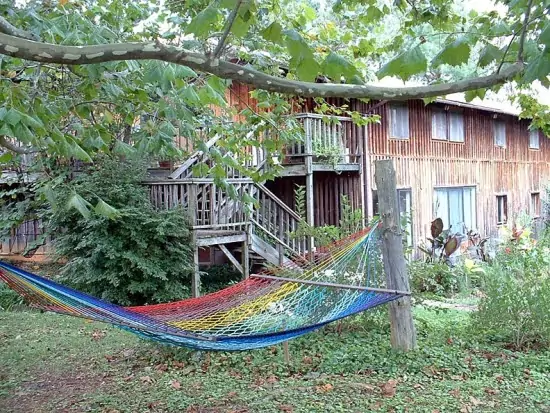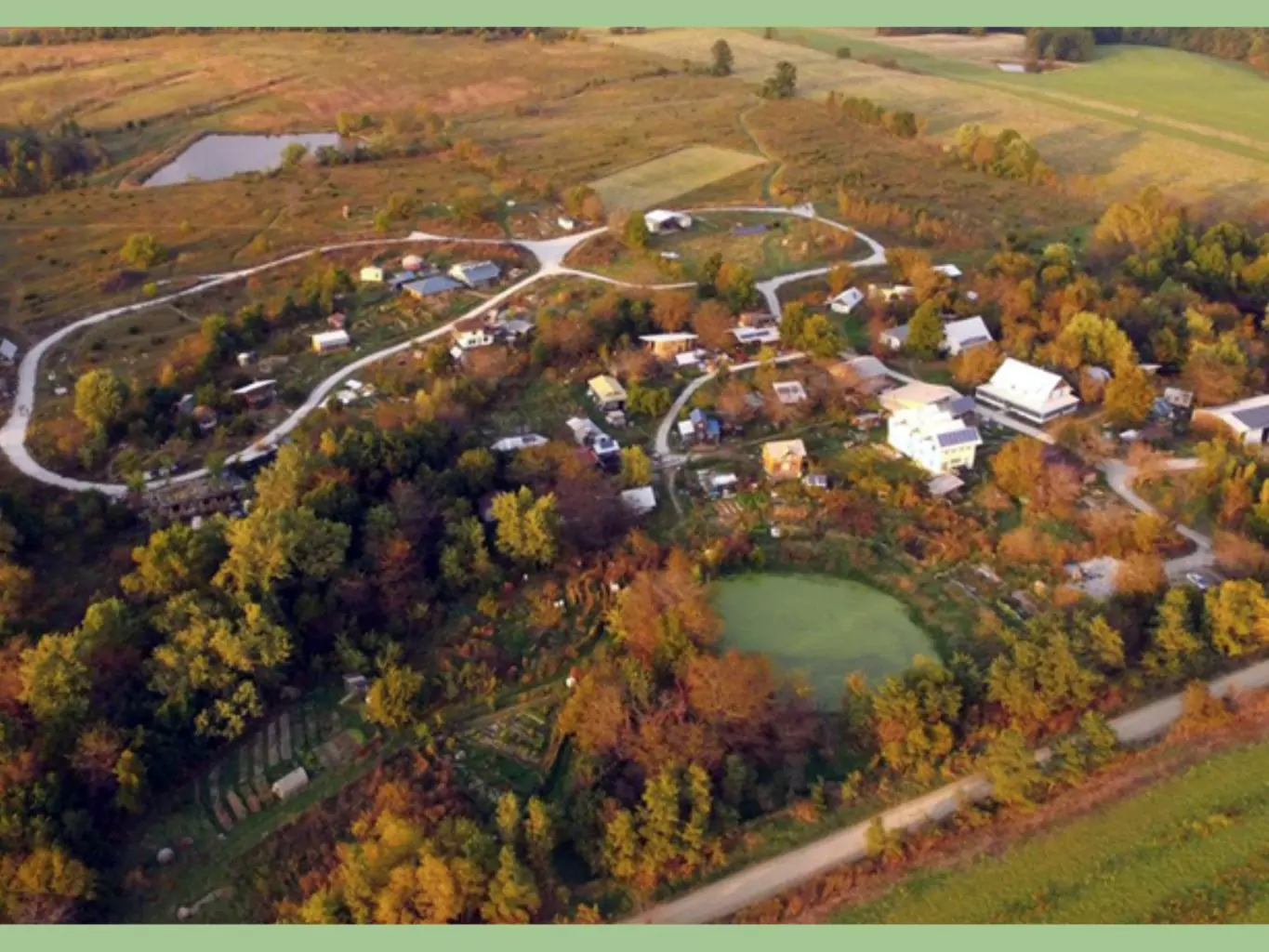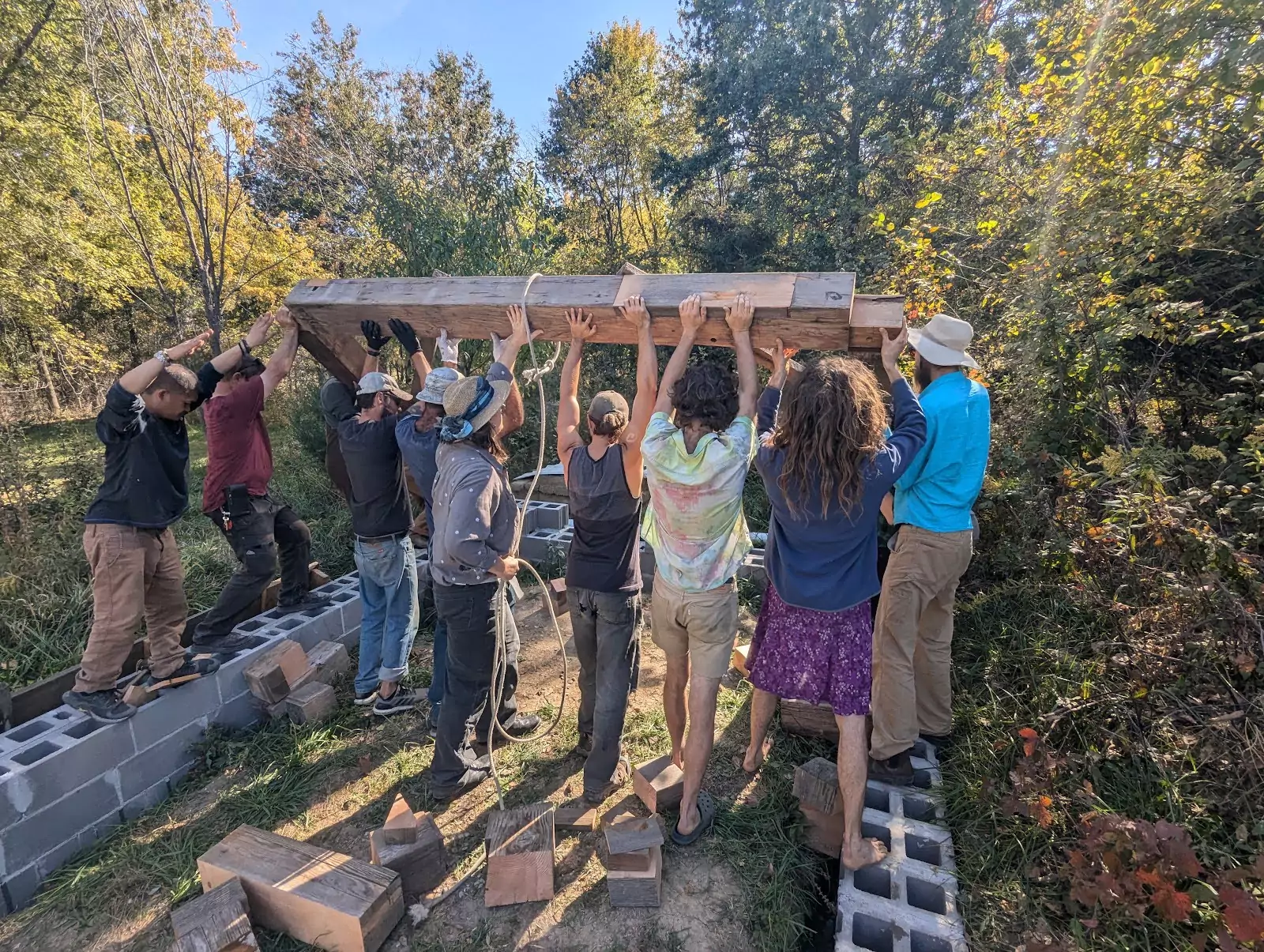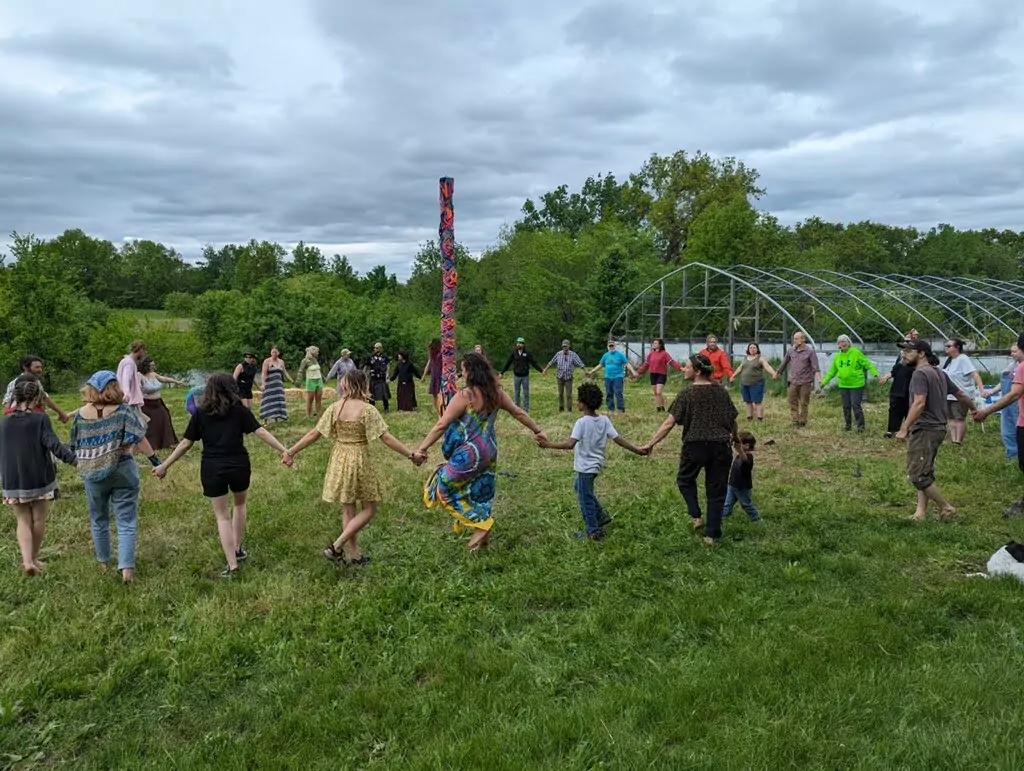My two and a half weeks at Twin Oaks income sharing community made me fall in love with my own community of Dancing Rabbit Ecovillage again. Nathan here, to share what happened.
On July 4, I arrived at Twin Oaks for an extended stay as a guest. It was a strange feeling to see the community again. I hadn’t been there since 2004, when I had gone for a short visit with a girlfriend of mine at the time. Before then I was an intern at Twin Oaks for a couple of months in 2001. The place still felt the same, but most of the faces had changed. It felt familiar, and yet I felt like an outsider, something I imagine a lot of people experience when they visit Dancing Rabbit after being away for many years.

During my visit I got to reconnect with a few old friends, and make a number of new ones. Many of the people I spoke to expressed that they came to Twin Oaks for the values, but they stay for the comfort. People who expressed this generally felt some sense of disappointment that the community wasn’t what they hoped it would be. The moderate discontent of some of the Oakers stood in stark contrast to how I see the place: an amazing example to the world, for nearly 60 years, that an alternative way of organizing ourselves economically is possible.
To be fair there were a number of people, some new and some longer term members, who were also very happy with their lives and with the community in general. One young man particularly stood out to me. Some of the newer people in the community saw him as someone who might have the capacity to hold and support a strong, current, vision for the community. In talking with him I could see that not only did he have the capability to be a good community leader, he also loved Twin Oaks, describing it as a paradise when I asked him what he liked about the place. He clearly was shining in his life and in his community. The fact he was such a bright light seemed to me to be connected with why some shorter term members saw him as someone who could help hold and support the community’s vision.
In contrast, I saw some of the longer term members also held a strong vision for the community, but it seemed to me their attachment to old strategies of achieving this vision, and their frustration with the lack of full community adherence to these strategies, actually blocked their ability to be seen as community leaders by newer members. I found this very ironic since the vision the longer term folks held for the community still seemed very much alive and thriving, even though some of the details might not be exactly as they wanted them to be. It’s as if they had spent their lives creating a beautiful lake of water to swim in, the water of income sharing. Yet they had become so used to swimming in it that all they could see was some of the plants in the water weren’t what they wanted them to be. Rather than appreciating the beauty, longevity and health of the body of water they swim in every day, they felt tired of trying to remove the plants they didn’t like from their lake. The saddest part of this for me was that some of the long term members of Twin Oaks, who I see as some of the elders of the community, weren’t being valued as I wish they would be. They have tremendous wisdom from all their years living in community, but many of the new community leaders didn’t seem to easily and naturally seek out the guidance or counsel of their elders. A big loss for all parties, in my opinion.
In all this I saw myself reflected in some of the longer term members of Twin Oaks; idealistic when I moved to DR, but a bit disillusioned after nearly two decades of working to achieve our vision. If someone had asked me before this trip to Twin Oaks, “Do you stay at Dancing Rabbit for the vision or for comfort?” I would have said comfort. Why? Because we had a vision of growing to 500 to 1,000 people who are modeling a sustainable way of life for the world, and after nearly 20 years living at DR we are only about 55 people. This is roughly 30 more people than when I first moved to the community in 2005. Not the growth I hoped for, nor what I expected.
We had gotten up to around 68 members at one point, but we shrank down to about 35 after three big blows that hit our community over a number of years: A failed attempt to build a large and ecologically ambitious new community building, child sexual abuse taking place in our community, and COVID and the conflict about how to handle it. At our current level of about 55, our population has recovered a bit since our final dip after COVID, but the scars from all these experiences are still visible in different ways. The recovery from the traumas of these events are still ongoing.
In the past couple of years there has been some excitement again about growing larger than we are, but many folks don’t want to be 500-plus people. We want to be bigger than our current size, but many want to stay below 150 (based on Dunbar’s number: a concept from an anthropologist who noticed that nomadic hunter gatherer groups never grew larger than this size). Many want to keep the feel of a community where we all know each other, rather than shift to the dynamic of a small town. These folks believe Dunbar’s number provides good guidance for how to achieve this. I, too, like living in a group of people where I know everyone. I don’t want to lose this either, and I agree we should take Dunbar’s number into account. That said, in our recent attempts to build energy for growing again it’s been easy for me to get frustrated when people see Dunbar’s number as a reason not to grow over 150. I think we can grow multiple 100-150 person communities inside of our ecovillage as long as we expand our land base. I think we can get the best of both worlds and I get discouraged when I see that people are attached to staying below 150. In summary, I’ve been sad and frustrated that our growth hasn’t come as quickly as I wanted and that the desire for the level of growth I want is not shared by almost all my community mates. My discontent had led to hopelessness about achieving the growth part of our vision, which is very important to me. Without hope for fully manifesting our vision, I had come to the conclusion I was staying at DR because it’s comfortable.
My time at Twin Oaks showed me this is a little absurd. Dancing Rabbit is a radical place, far from easy as a place to live for the vast majority of people, including for me at times. Composting your own poo in the dead of winter and the sweltering heat of the summer isn’t comfortable. Constantly cleaning up after visitors, work exchangers and community kids in our Common House kitchen can take its toll. Grappling with child sexual abuse taking place in one’s own community is devastating on so many levels. Sticking with it and finding a way through isn’t easy. It isn’t comfortable. It takes great dedication to live an environmentally conscious life in a small, rural ecovillage, surrounded by a hyper consumerist culture that is constantly knocking at the door.

My trip to Twin Oaks helped me see the reality that in spite of all these challenges, I love my life at Dancing Rabbit: free of car ownership, sharing our land, sharing kitchens, engaging in collaborative governance, deconstructing toxic masculinity in the men’s group I’m in, playing ultimate, singing together, grieving together, going about our daily lives in community, all while consuming a fraction of the resources of a typical American. Having a lifestyle that’s deeply rooted in my values while being surrounded by others who share them, is what keeps me at DR, not comfort. Sure I would like us to be bigger than we are, but my sadness about our historic growth, the failed strategies we’ve used in the past to expand our population, the differences we have about exactly how big we want to get and how we should handle the conflicts along the way, don’t actually take away from the beauty of this place. They just indicate how amazing it is that we are still here.

Furthermore, we have recently realigned ourselves as a community to the goal of growing by nine percent a year in our membership over the near term and we are making great progress in this respect. We have a bunch of wonderful new young, talented, queer folks becoming members and stepping into leadership at Dancing Rabbit. To come to this realignment in our growth goal, we decided to deemphasize our original vision of growing to 500 to 1,000 people. This was needed to address some people’s desires to not commit to growing beyond Dunbar’s number. Rather than seeing this as an erosion of our original vision, my time at Twin Oaks helped me realize this is simply the healthy evolution of our community vision to address the real needs of the people who live here. Since I also want to live in a place where I know everyone, I don’t need to see people who are concerned about Dunbar’s number as opponents. I can see them as allies in making sure that whatever growth goals we achieve, we do so while maintaining a healthy community. This is a frame I can easily appreciate as I, too, see the need to build communities that unwind the epidemic of loneliness that is ubiquitous in the wider consumer culture.

Being flexible in this way isn’t about giving up, or giving in. I myself have grown and changed a lot in my almost two decades at DR. For example, at one point I would not get in a motorized vehicle alone and I would only travel by train for long distance trips in order to minimize my carbon footprint. I eventually gave up on only carpooling. I came to the conclusion I was just limiting my ability to connect with people I care about and to network with people who are making the world a better place. Limiting myself in this way was hurting my ability to increase my positive influence in the world, without effectively inspiring anyone to follow my approach to minimizing car use. Later I gave up on never flying when I encountered data from the Union of Concerned Scientists that showed me my train travel over 800 miles in a sleeper car was actually worse than a nonstop coach flight going the same distance. In fact, I’m writing part of this on a plane as I fly from Newark to Chicago on my way home. I kept track of the carbon dioxide from the round trip flight and I will soon pay to sequester the carbon, nearly doubling the cost of my flight. This is my modified strategy to keep my carbon footprint low. It’s one I believe is more programmatic than what I used to do and that may have more potential to inspire others to lower their footprints in the same way. In other words, my environmental values haven’t changed much in 20 years, but my strategies have changed a lot.
If I give myself the grace to shift my strategies for addressing the climate crisis, I can give my community the grace to take into account the importance of Dunbar’s number in our approach to growing our community and building a model of sustainable living that can inspire the world. My community still cares about modeling a sustainable way of life for the world, just as much as it did when I moved to DR. But we are learning and evolving as we adjust our strategies to be more effective in our goals and to be more fulfilled in our lives.
I’m grateful for my time at Twin Oaks. It’s given me a wonderful gift. I’m not feeling frustrated at the thought of coming home to some plants I am tired of trying to remove from the body of water that is my community. I’m coming home excited to enjoy the beautiful lake of sustainable living I get to swim in every day.

Nathan Mackenzie Brown is a long time member of our community. He actively participates in many aspects of DR community, including our governing processes.
